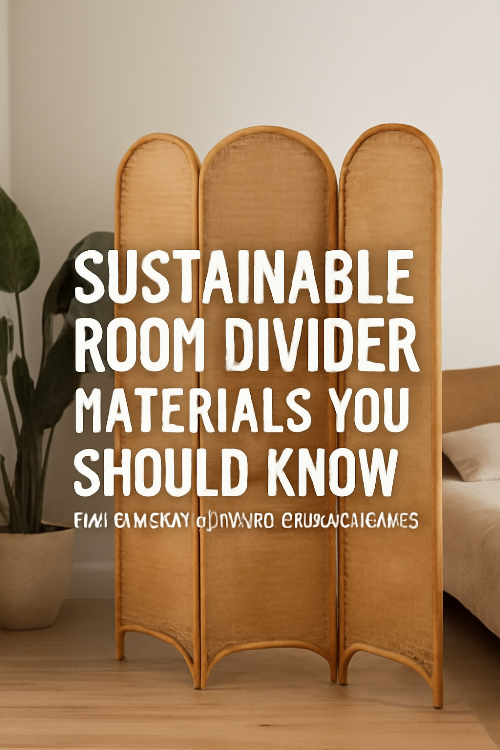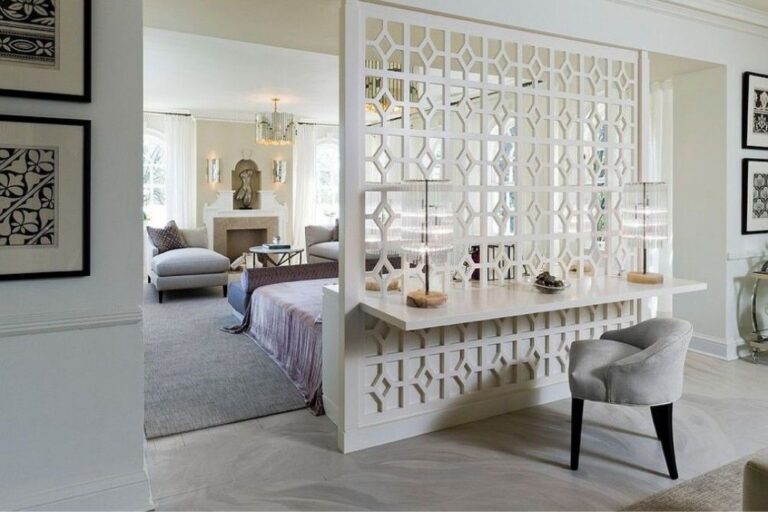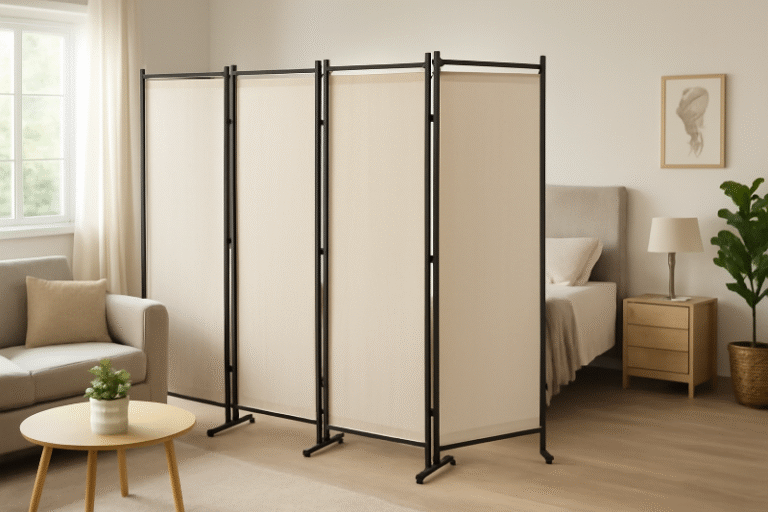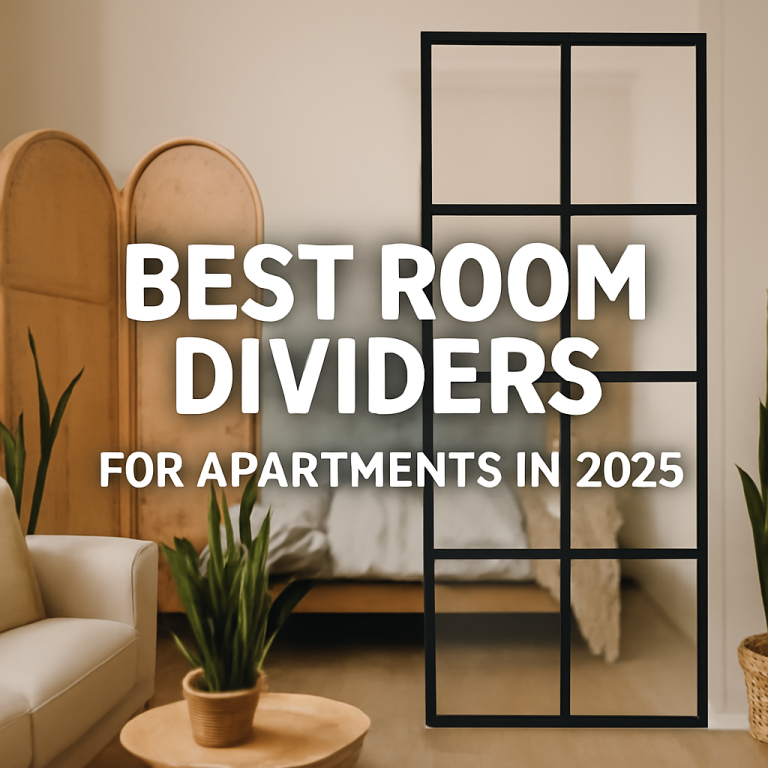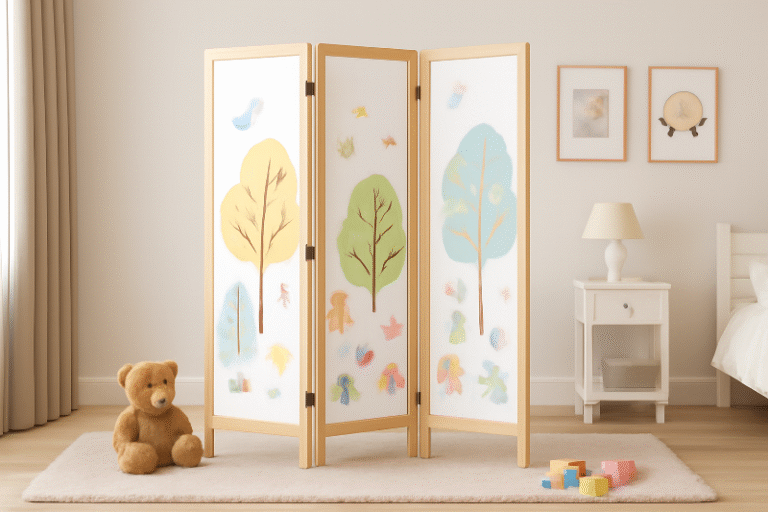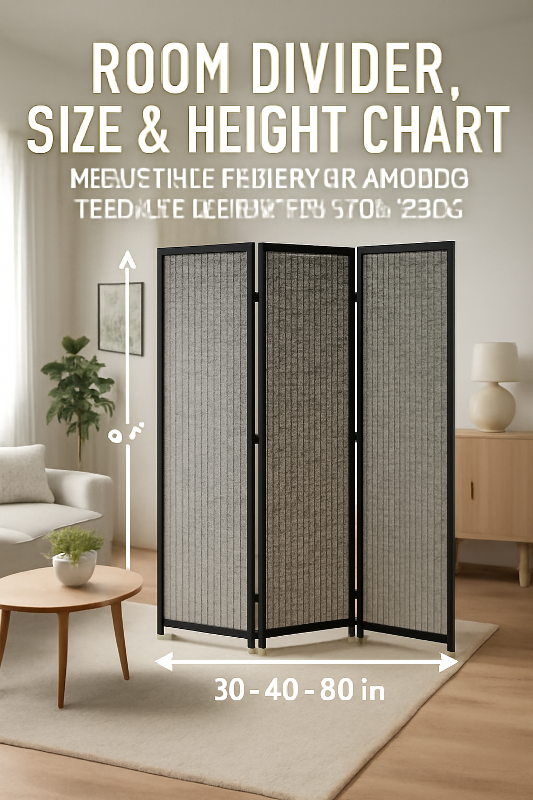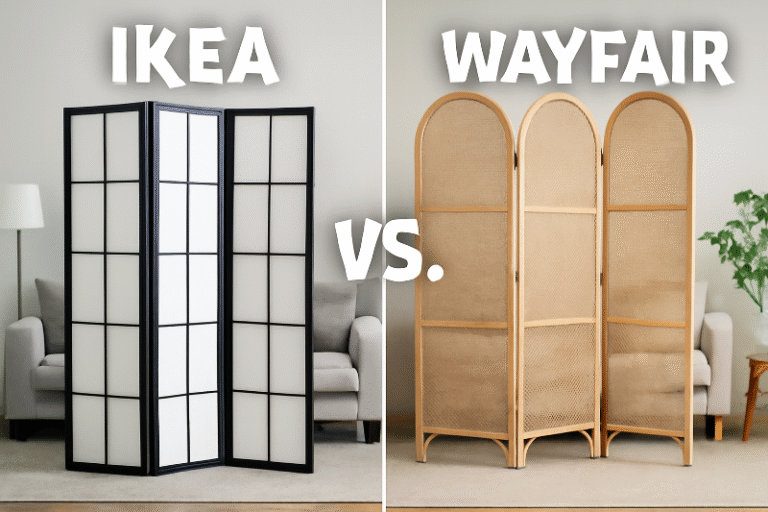As sustainability becomes a priority in modern interior design, more people are looking for eco-friendly alternatives to traditional room dividers. Not only do these materials help reduce your carbon footprint, but they also offer a unique, stylish way to enhance your home or office space. Whether you’re looking to create partitions in an open-concept apartment, or add privacy in a shared space, sustainable materials are a great choice for those who want to incorporate both function and environmental responsibility into their décor. Here are some sustainable divider materials that are gaining popularity in 2025, offering an eco-conscious solution without compromising on style.
1. Bamboo: Fast-Growing and Versatile
Why It’s Sustainable:
Bamboo is one of the most sustainable materials available. It’s a fast-growing grass that can be harvested in just a few years, unlike hardwood trees that take decades to mature. Bamboo is highly renewable and requires fewer pesticides and fertilizers compared to other crops, making it an eco-friendly choice for room dividers.
Why It Works for Room Dividers:
Bamboo offers a natural, minimalist aesthetic that works well in contemporary and rustic designs. It’s durable, lightweight, and can be used in various forms – from slatted screens to woven panels. Bamboo room dividers can also be easily customized to fit different spaces and needs.
Examples:
- Bamboo Folding Screens: Easy to set up and move around, these offer a sustainable yet flexible solution for dividing rooms.
- Bamboo Slatted Walls: These provide a sleek, modern look while still maintaining natural appeal.
2. Recycled Wood: Giving New Life to Old Materials
Why It’s Sustainable:
Recycled wood is an excellent eco-friendly material that minimizes the demand for new timber, reduces waste, and helps preserve forests. By repurposing old wood from furniture, pallets, or construction debris, recycled wood reduces the environmental impact of manufacturing new products.
Why It Works for Room Dividers:
Recycled wood adds warmth, texture, and a sense of history to any space. It can be crafted into various divider styles, such as rustic wooden slat walls, sliding barn doors, or bookshelf-style dividers. The versatility of recycled wood means that it can be adapted to both modern and traditional designs.
Examples:
- Reclaimed Wood Room Dividers: Large wooden panels or slats create a natural and sustainable partition.
- Upcycled Pallet Dividers: Using wooden pallets as room dividers adds a rustic touch while being eco-conscious.
3. Cork: Natural, Lightweight, and Acoustic
Why It’s Sustainable:
Cork is harvested from the bark of cork oak trees without harming the tree itself, making it a renewable resource. Cork is biodegradable, recyclable, and a natural insulator, which helps reduce energy consumption. Cork forests also act as carbon sinks, absorbing CO2 from the atmosphere, further contributing to environmental health.
Why It Works for Room Dividers:
Cork is an excellent choice for acoustic room dividers, as it naturally absorbs sound. It’s also lightweight, making it easy to move and handle. Additionally, cork has a natural, earthy appearance that can add a modern, textured look to a room, with the added benefit of soundproofing properties.
Examples:
- Cork Panel Dividers: Panels made of cork can be arranged in a grid or custom pattern, serving both as a functional partition and a noise-dampening feature.
- Cork and Wood Hybrid Dividers: Combining cork with reclaimed wood creates a sustainable, aesthetically pleasing, and sound-absorbing divider.
4. Hemp: Eco-Friendly and Durable
Why It’s Sustainable:
Hemp is a highly renewable material that requires very little water or pesticides to grow. It’s biodegradable, making it an eco-friendly alternative to synthetic fibers. Hemp is also a strong and durable material, which makes it an ideal choice for long-lasting furniture and home décor.
Why It Works for Room Dividers:
Hemp fabric can be used for creating soft, flexible dividers that are both lightweight and durable. Hemp is naturally resistant to mold and mildew, making it suitable for humid environments like bathrooms or basements. Hemp-based room dividers offer a sustainable, textile alternative to traditional curtains or drapes.
Examples:
- Hemp Fabric Room Dividers: Create draped partitions from hemp fabric, offering a soft and natural look.
- Hemp Woven Panel Dividers: Use woven hemp panels as a sturdy yet eco-friendly alternative to traditional wooden or metal dividers.
5. Recycled Plastic: Reducing Waste, Creating Design
Why It’s Sustainable:
Recycled plastic materials reduce waste and the demand for new plastic production, helping to mitigate plastic pollution. Using recycled plastics in home décor also contributes to a circular economy by turning discarded plastic into useful products. This material can be reprocessed and reused multiple times without losing its integrity.
Why It Works for Room Dividers:
Recycled plastic can be molded into versatile shapes, making it perfect for modern, sleek divider designs. It’s lightweight, durable, and easy to maintain, which makes it suitable for high-traffic areas. Recycled plastic can be used to create modular or customizable room dividers that can be arranged to suit different spaces.
Examples:
- Recycled Plastic Panel Dividers: Available in a variety of designs, these dividers are easy to clean and maintain while offering an eco-friendly alternative to traditional materials.
- Modular Recycled Plastic Screen Systems: These systems can be customized and rearranged to fit different configurations and are made entirely from recycled plastic.
6. Linen: Natural and Breathable
Why It’s Sustainable:
Linen is made from flax, a plant that requires minimal water and chemicals to grow, making it a sustainable fabric option. Linen is biodegradable and durable, which means that products made from this material have a long lifespan and leave less environmental impact. Linen’s natural properties also mean it requires less energy to process compared to synthetic fabrics.
Why It Works for Room Dividers:
Linen offers a natural, light texture that can be used for soft room dividers, perfect for creating airy, open spaces. Linen’s breathable qualities help maintain a comfortable indoor environment, and its aesthetic appeal adds a timeless, rustic charm to any space.
Examples:
- Linen Curtain Dividers: Soft, lightweight linen curtains create a flowing partition for dividing living areas or bedrooms.
- Linen Tension Rod Dividers: Hang linen fabric panels from tension rods to easily divide spaces while maintaining a breathable and natural look.
7. Recycled Glass: Elegant and Transparent
Why It’s Sustainable:
Recycled glass is made by melting down glass products that would otherwise be discarded. The recycling process uses less energy compared to manufacturing new glass, and the material is fully recyclable, making it an eco-friendly choice.
Why It Works for Room Dividers:
Recycled glass room dividers can add elegance to your space while still being environmentally responsible. They allow light to pass through, making them ideal for dividing rooms without completely blocking visibility. Recycled glass also has a sleek, modern look that works well in contemporary homes.
Examples:
- Glass Panel Dividers: Clear or frosted glass panels can be used in sliding or folding room dividers, allowing for transparency while creating a physical partition.
- Glass and Metal Hybrid Dividers: A combination of recycled glass and metal framing creates a modern, industrial-style divider with sustainable elements.
Conclusion
Sustainable room dividers not only help you reduce your environmental impact but also add a unique and stylish touch to your home. Materials like bamboo, recycled wood, cork, hemp, recycled plastic, linen, and recycled glass offer eco-friendly alternatives to traditional partitioning solutions. By choosing these sustainable materials, you can create functional and beautiful dividers that complement your interior décor while contributing to a greener planet. As sustainability continues to influence design trends, more eco-conscious room divider options will become available, making it easier than ever to design a space that is both stylish and environmentally friendly.
